What is Gond
Like I mentioned in the beginning, ‘gond’ is the Hindi word for ‘gum.’ These are natural gums derived from the sap of trees, some of which are edible and some not. Indian cuisine traditionally uses some of these edible gums in making the Gond Ke Laddu, a common sweet snack. In addition to this Gond Ke Laddu recipe, there are various other dishes that include gond as an important ingredient. But before I mention about those, here is a bit more on the 2 most used types of edible gums in Indian cuisine (particularly in North India):
- Tragacanth gum: This one (photo below) is also called as ‘katira gond’ in Hindi language and ‘badam pisin’ in Tamil language. It has cooling properties and thus, is used as a cooling ingredient in summers. Thus also added to typical refreshing summer beverages like gond sharbat, Jigarthanda, Falooda, etc. It swells and becomes jelly like when soaked in water. Due to this property, it is used as a thickener in many food items.
- Acacia gum or gum Arabic: This is the dried sap of the acacia tree, also referred to as the babul tree (kikar) in Hindi. It is known as ‘Dink’ in Marathi or ‘Gond’ in Hindi. To make Gond Ke Laddu, acacia gum is used. Acacia gum is heaty and thus, consumed during winters as it helps to keep the body warm. Gond Ke Laddu and Gond Panjiri are quintessential winter sweets in many parts of North India. Gond ladoo is also great for nursing mothers.
About Gond Ke Laddu
Making Gond Ke Laddu is a winter ritual in my home, every year. We usually make 1 to 2 kilograms of these ladoos during winters. I have been preparing these laddus since long now. Hence, it was only right to share this recipe with you all here. Also, because it is one of the classic Indian recipes, which is also beneficial for the health. Gond Ke Laddu is also called as Dink Ladoo in Maharashtrian cuisine. However, this particular recipe is a Punjabi one that I originally learned from my mother-in-law. Since the time I learnt it from her, I have been making it at home. In this recipe, I have ground the unrefined sugar to get a fine powder. You can even use store-bought powdered sugar while making Gond Ke Laddu. These laddus are nutrient-dense, heavy and filling, as apart from gond, whole wheat flour, ghee and nuts are also added in the recipe.
How to make Gond Ke Laddu
Make Powdered Sugar
- Take 1 heaped cup raw sugar (200 grams) in a grinder jar.
- Grind to a fine powder. Remove on a plate and set aside.
Fry Nuts
- Heat ½ cup + 4 tablespoons desi ghee in a heavy kadai. Do not use a non-stick kadai. A heavy iron or aluminum kadai works best for frying gond.
- Let the ghee melt. Keep heat to medium-low.
- Add 2 tablespoons almonds.
- Stirring often, fry almonds.
- Fry almonds till they change color. Remove with a slotted spoon and keep aside.
- Now, add 2 tablespoons cashews.
- Stirring often, fry cashews.
- Fry cashews till they become light golden or golden. Remove with a slotted spoon and keep aside.
- Add 2 tablespoons pistachios. Fry for some seconds till they change color.
- Remove and keep aside.
Fry Gond
- Now in the same ghee, add one piece of gond. If the gond comes up gradually and puffs up, the oil is ready to fry the gond. If the gond settles down in the oil, then increase the heat and let oil become hot. In case the gond comes up quickly, then oil is very hot. Reduce the heat so that the oil temperature reduces a bit.
- Add gond in 2 batches. If you are experienced, then add gond in a single batch. I added all the gond at once and fried them.
- Stir continuously and fry gond till all of it puffs up.
- The gond pieces have to be fried evenly. 17. Stir continuously.
- Fry well in ghee and do not burn the pieces. They will turn heavy and puff up while frying.
- Remove the puffed up gond with a slotted spoon.
- Keep aside in a bowl or plate.
Roast Whole Wheat Flour
- Reduce the heat to low and add 2 cups whole wheat flour (atta) in the same ghee.
- Mix flour very well with ghee.
- Begin to roast flour with the ghee on medium-low to medium heat.
- While the atta is getting roasted, add fried nuts in a grinder jar.
- Also add the fried gond in the grinder jar or spice-grinder.
- Pulse and grind to a semi-fine or coarse powder. You can keep the nuts whole, if you want. You can also use a rolling pin and crush gond. Keep the powdered gond-nuts mixture aside. Note that the atta is getting roasted, while you grind the nuts and gond. If you are not able to multitask, then switch off the heat after frying gond. Crush nuts and gond in the grinder. Then, switch on the heat again and let ghee become slightly hot. Add atta and roast.
- Continue to stir and roast the atta.
- Roast atta till the color changes and you get a nutty aroma. Stir continuously, when you see the atta changing its color. 29. Stir and roast till the atta becomes golden or brown. Overall it took me a total of 17 minutes for the atta to get roasted to perfection (I had used a heavy iron kadai). Note that the timing will vary with the material, size and thickness of the kadai or pan. If you use steel kadai, then it will take less time. Also, check the taste of the roasted whole wheat flour and it should feel cooked. You should not feel any rawness in the taste.
Make Gond Ke Laddu
- Switch off the heat. Remove the kadai from the stovetop, add 2 tablespoons raisins and 1 teaspoon cardamom powder. You can even skip cardamom powder.
- Next, add the powdered sugar.
- Add the prepared gond-nut mixture.
- Begin to mix with a spoon. While mixing, break the sugar lumps with a spatula or spoon, if any, in the mixture.
- Mix very well.
- When the ladoo mixture is still hot and the heat is tolerable to you, take a heaped size portion of it in a spoon or in your palms. Shape in a round ladoo. In case the heat is not tolerable, then wait for some minutes. Avoid burning your hands. If the mixture does not hold shape, then add 1 to 2 tablespoons ghee. Note that the ghee should be in a semi-solid state at room temperature.
- Make medium-sized Gond Ke Laddu from the prepared mixture.
- Serve Gond Ke Laddu as a winter sweet snack plain or with some hot milk. When cooled to room temperature, store in an air-tight steel container at room temperature for a couple of months. The recipe yields 17 to 18 laddus and can be easily doubled or tripled. You can even half the recipe.
Benefits of Gond
Here are some of the reasons why you must consider trying this recipe of Gond Ke Laddu all the more:
Gond is a good source of calcium; thus, helps in keeping the bones and teeth strongBeing heaty, it helps to keep the body warm during cold wintersIt is also an excellent source of energy; thus, is apt for winter consumption and good for kids tooGond is given to nursing mothers as it helps in strengthening the backbone and aids in milk production. It also helps in giving energy and strength to mothers after pregnancyIt also helps the uterus to get back to its size, post child birth.
While the above is why should absolutely consider including the acacia gum in your diet, one important thing to remember is that you should avoid consuming it during pregnancy, as it is heaty in nature.
Expert Tips
Please be sure to rate the recipe in the recipe card or leave a comment below if you have made it. For more vegetarian inspirations, Sign Up for my emails or follow me on Instagram, Youtube, Facebook, Pinterest or Twitter. Besan ke Laddu Recipe (Easy Diwali Sweet) Rava Laddu Recipe | Suji Ke Laddu Atta Laddu | Wheat Ladoo Coconut Ladoo Recipe | Nariyal ke Laddu Made In 3 Unique Ways This Gond ke Laddu recipe from the blog archives, first published in January 2019 has been republished and updated on December 2022.
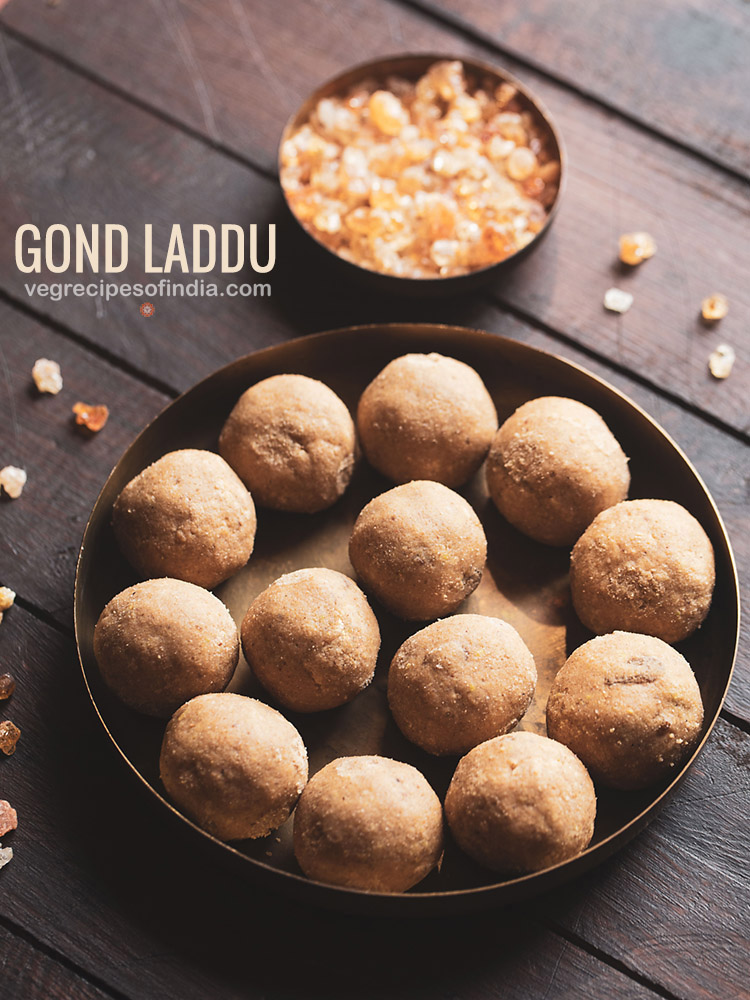
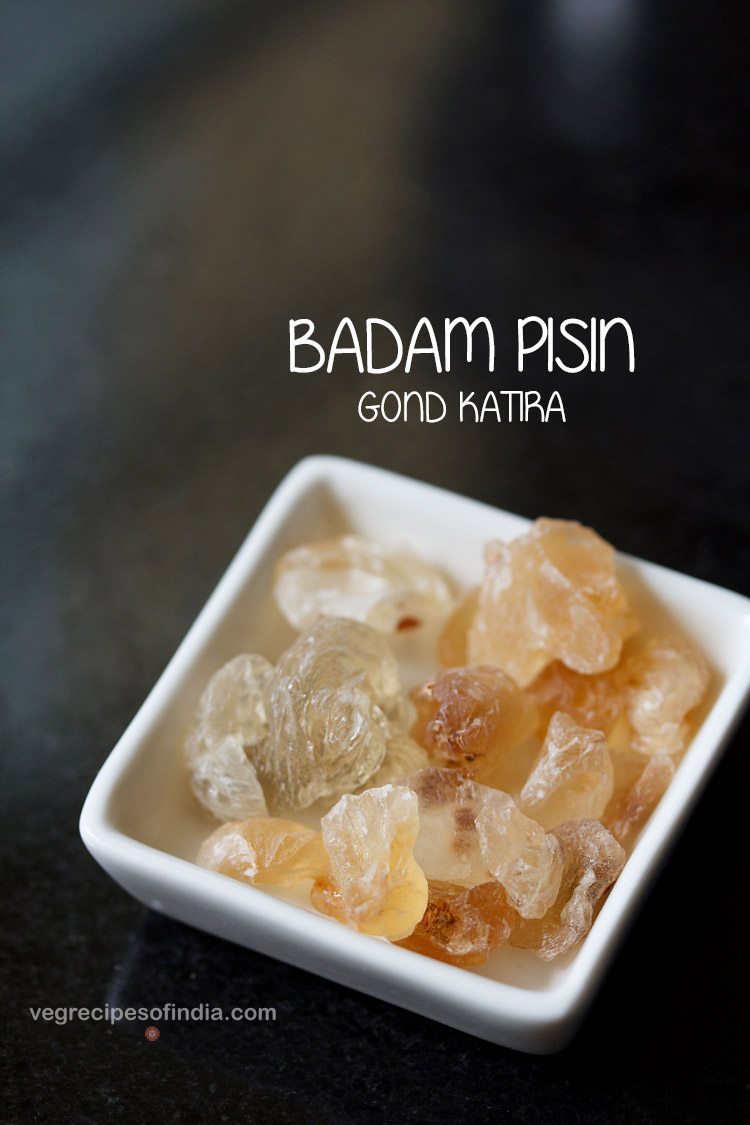
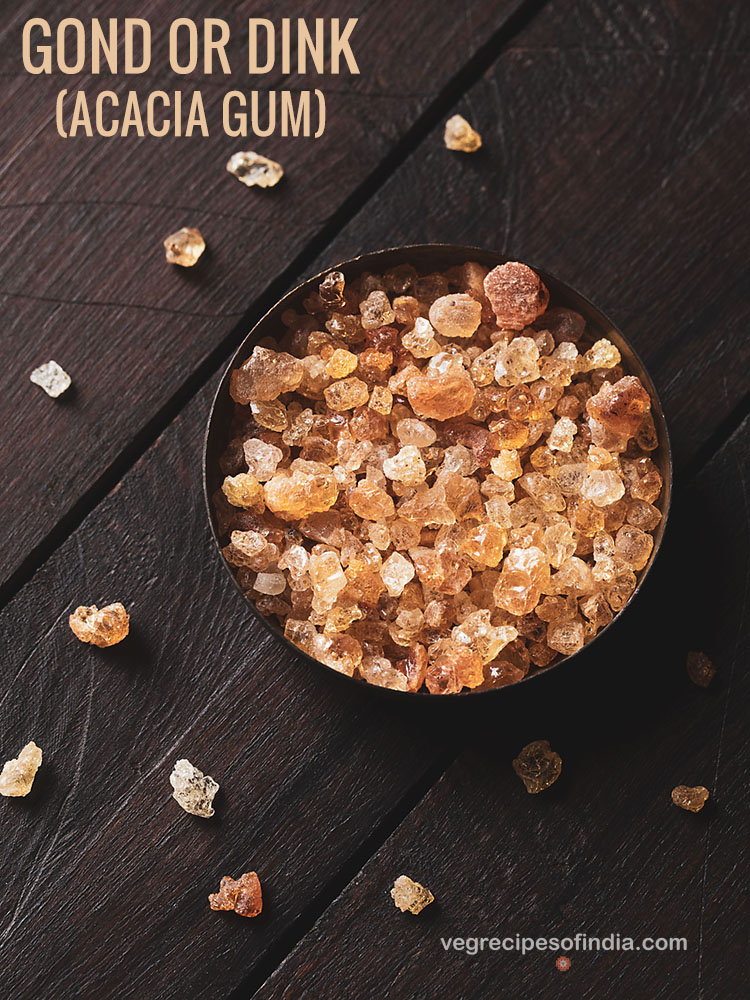
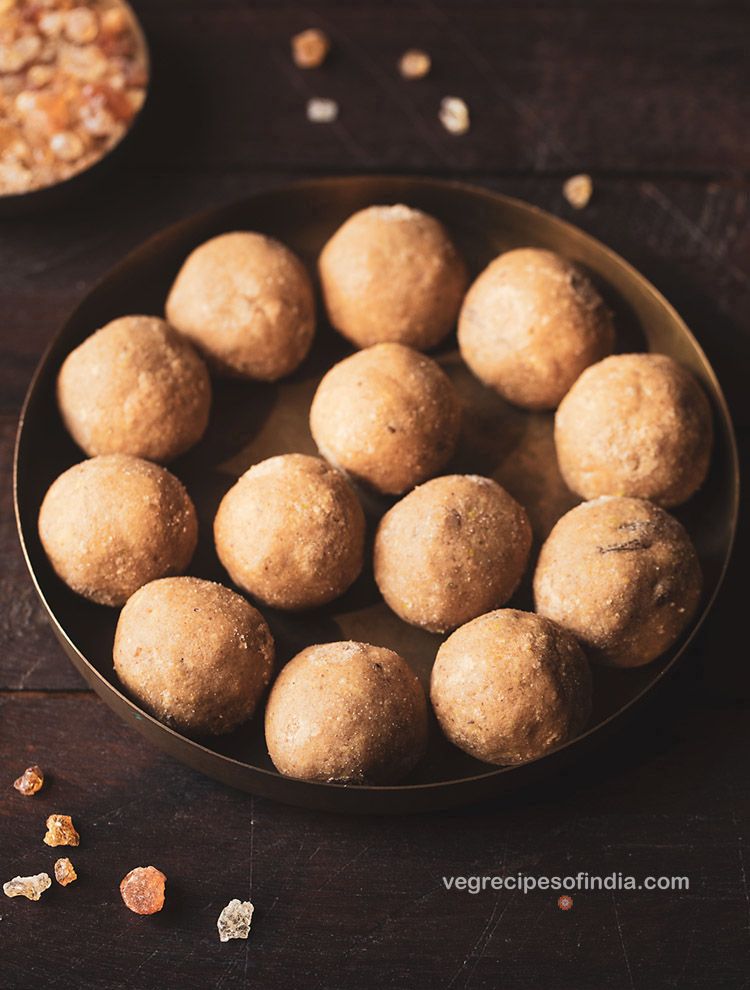
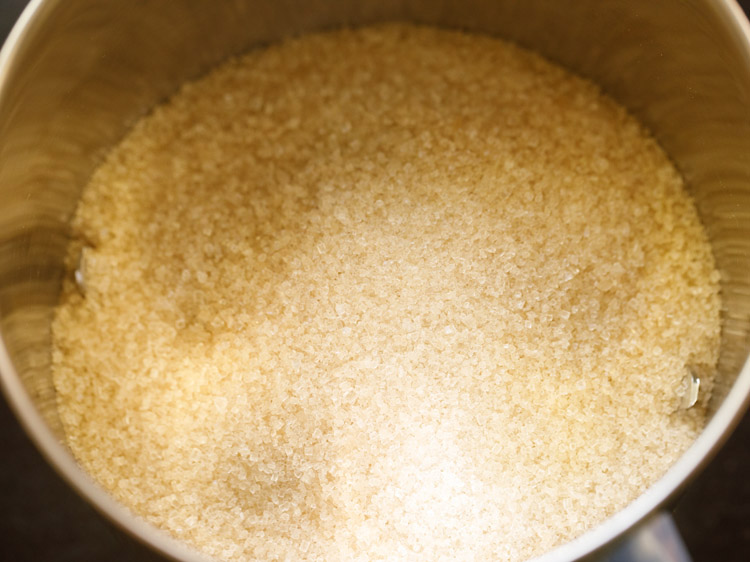
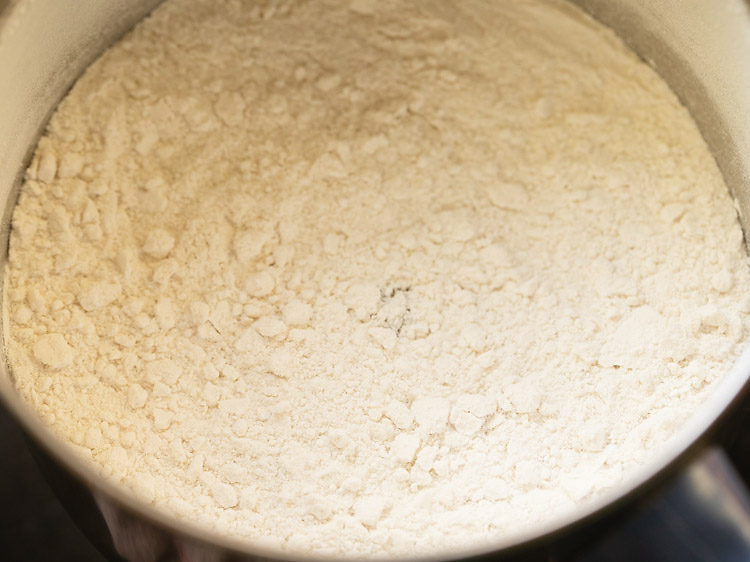
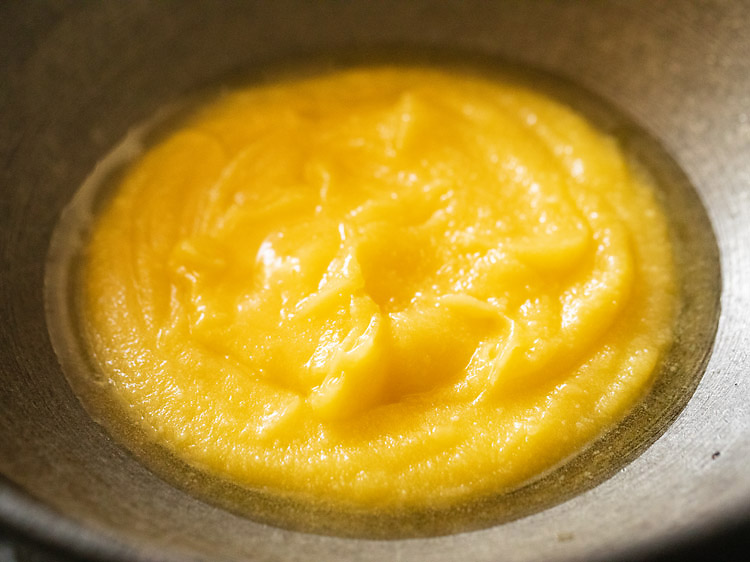
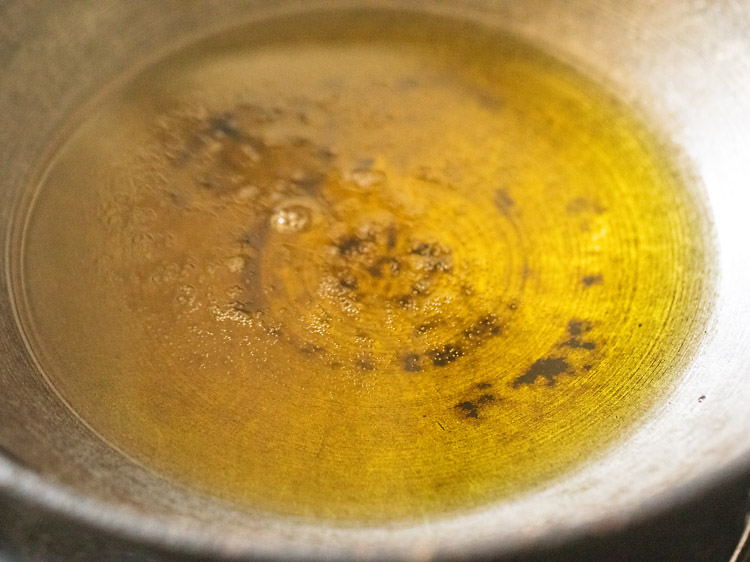
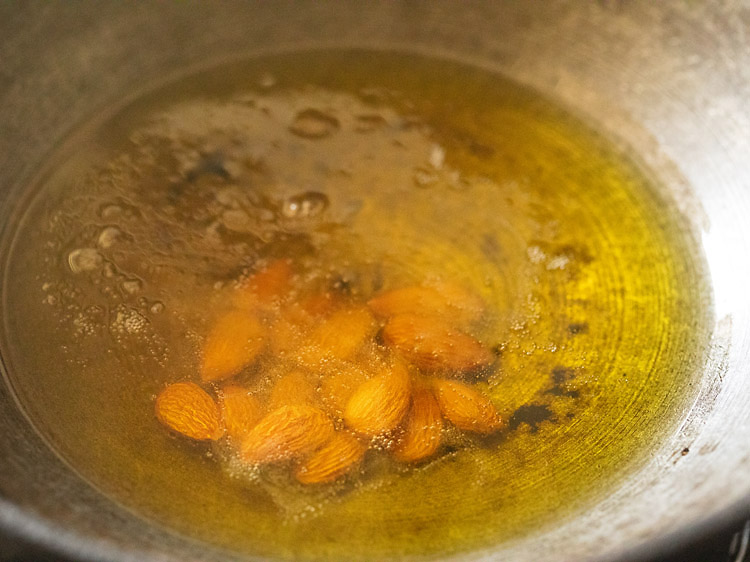
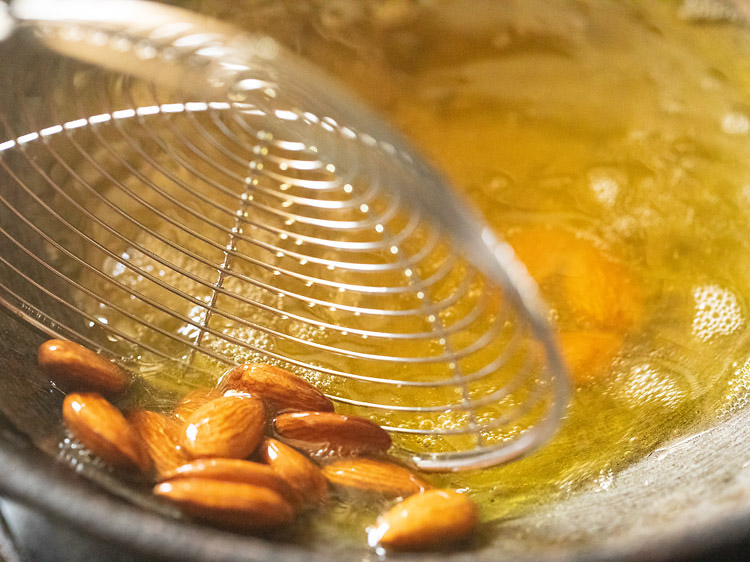
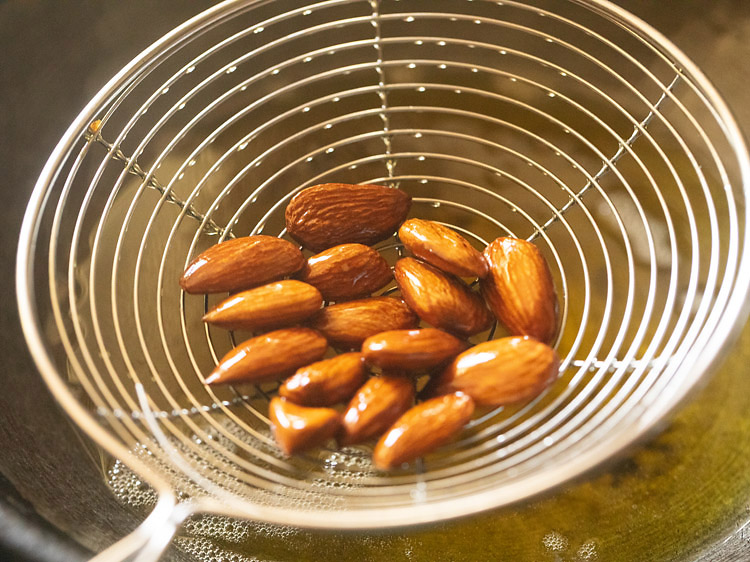
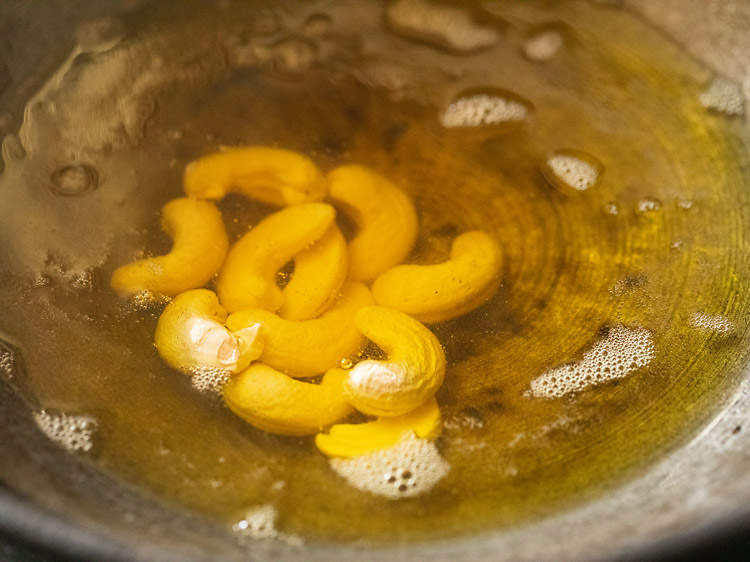
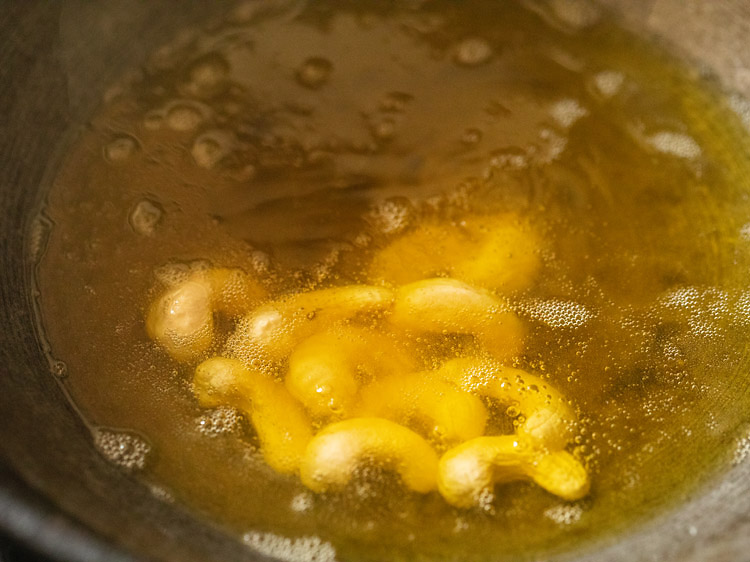
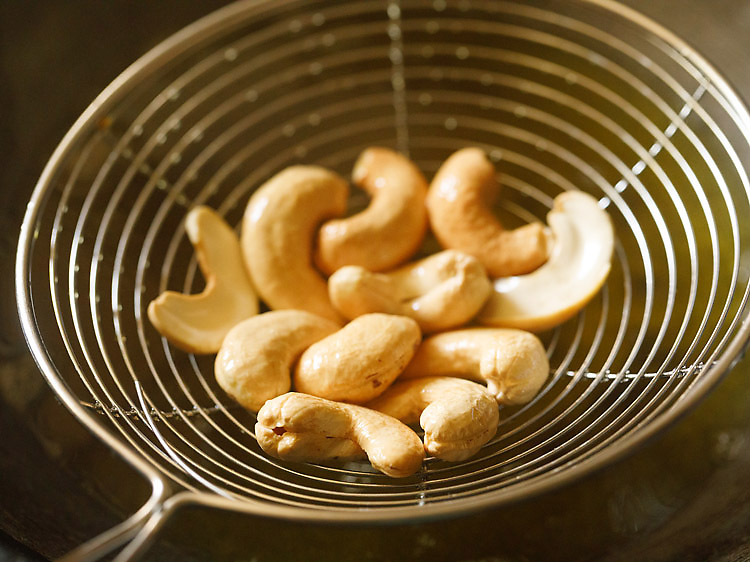
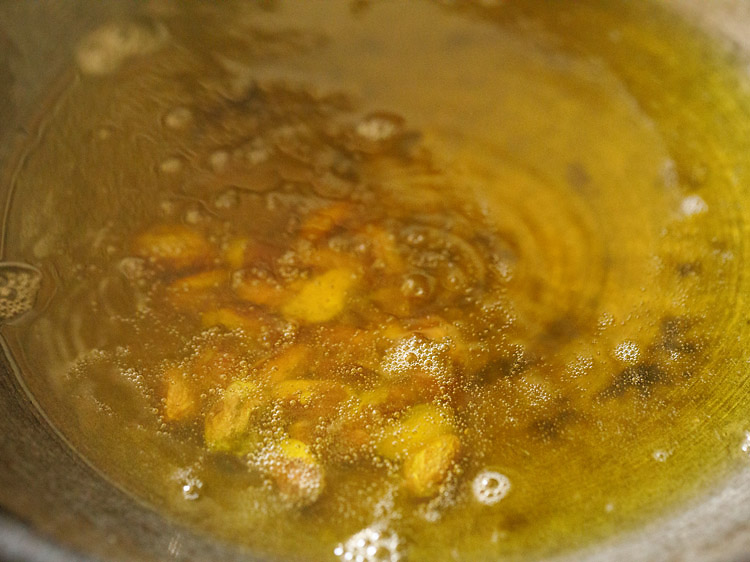
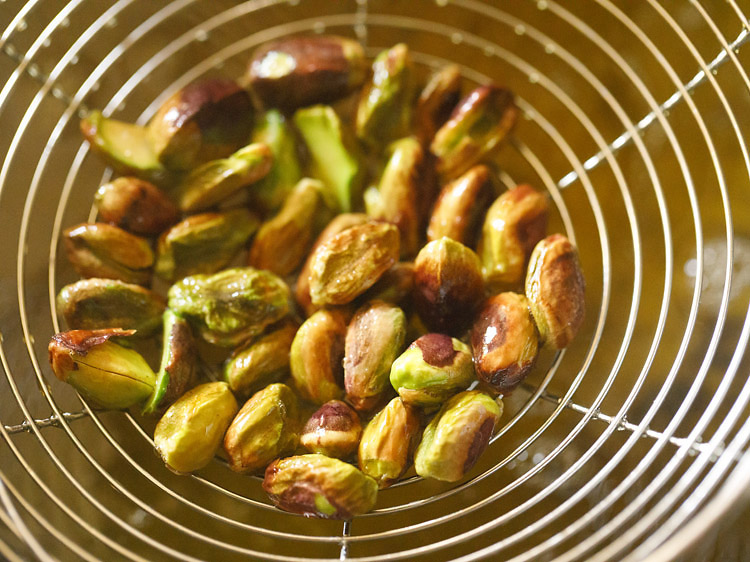
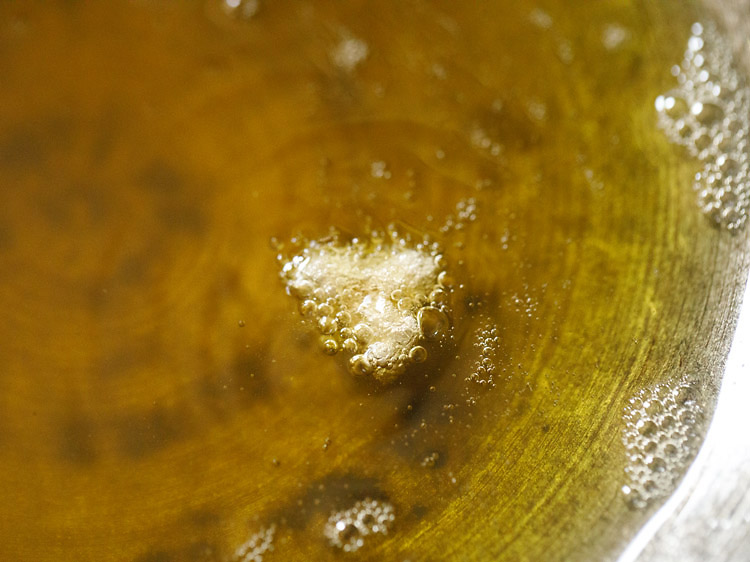
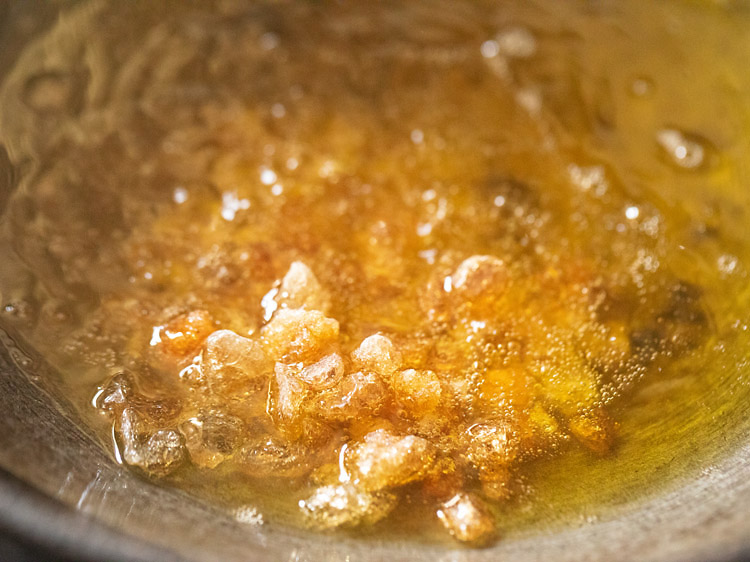
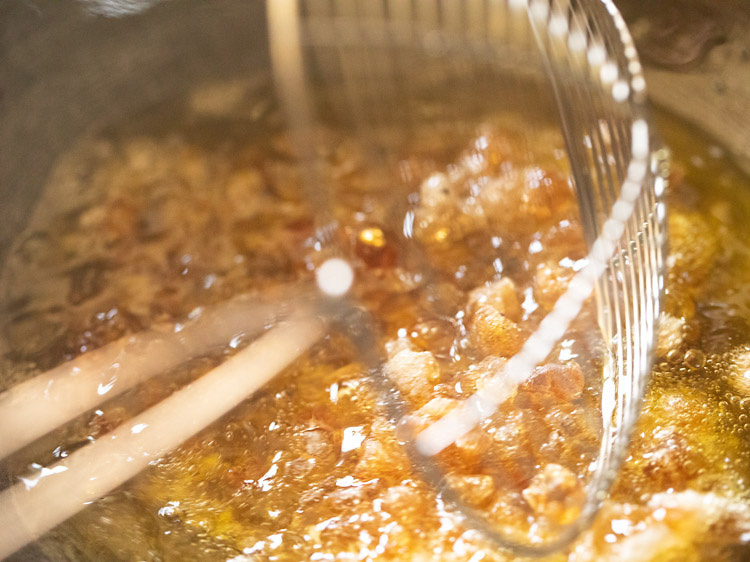
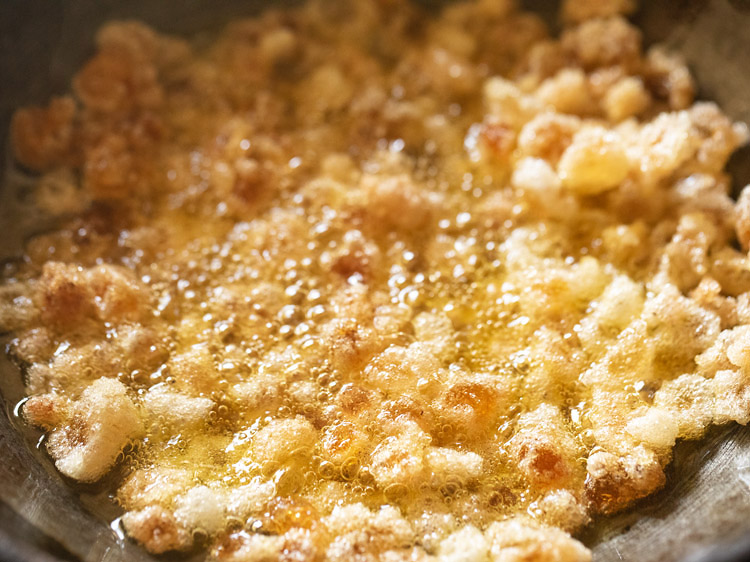
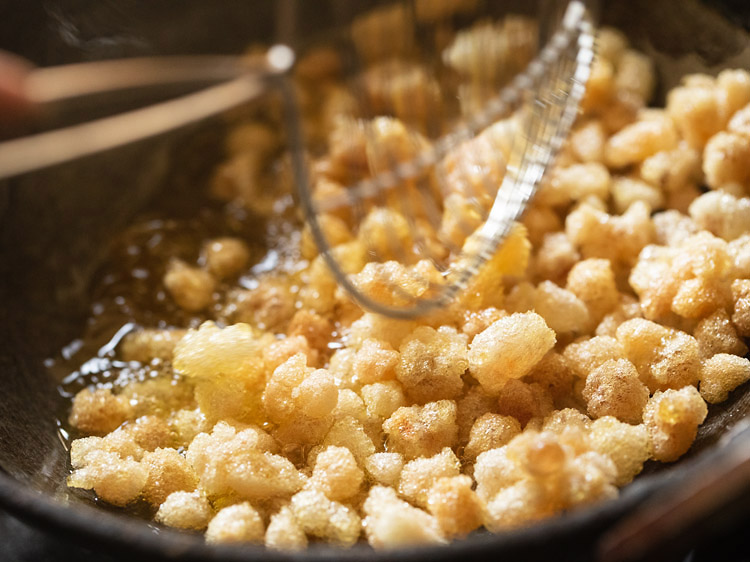
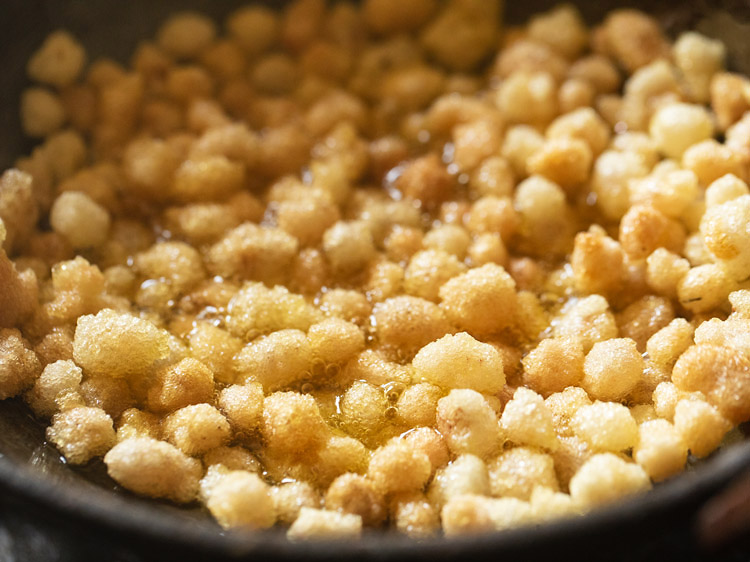
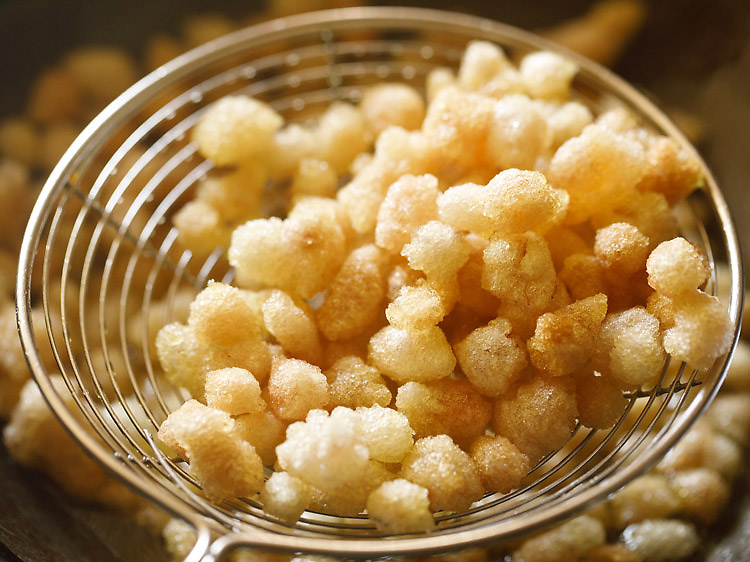
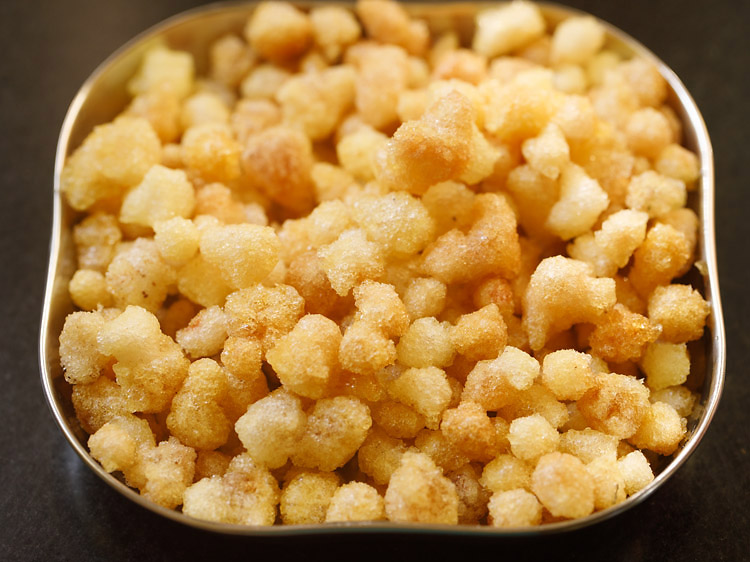
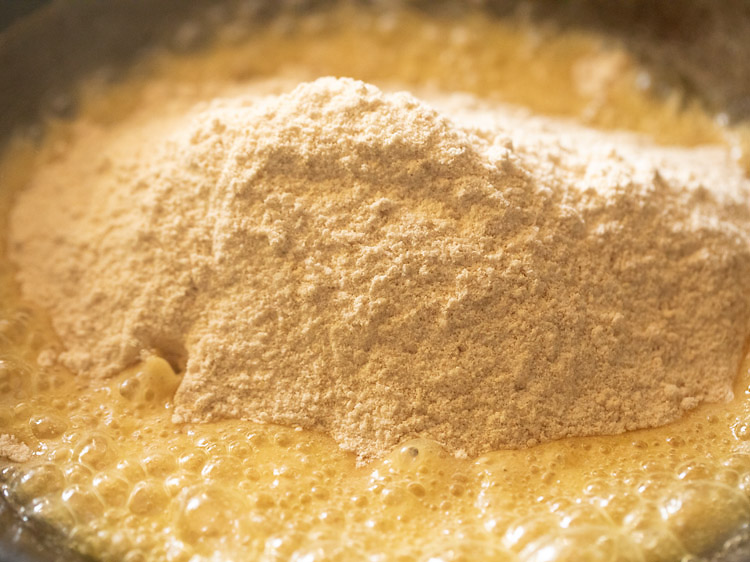
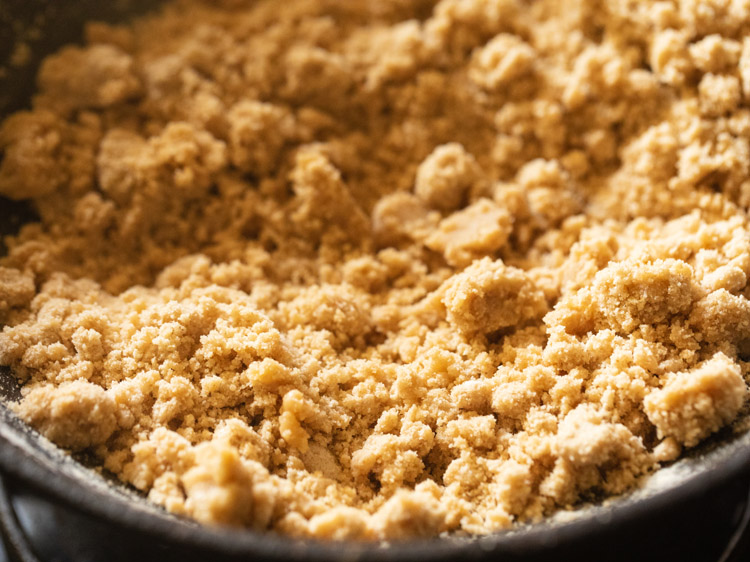
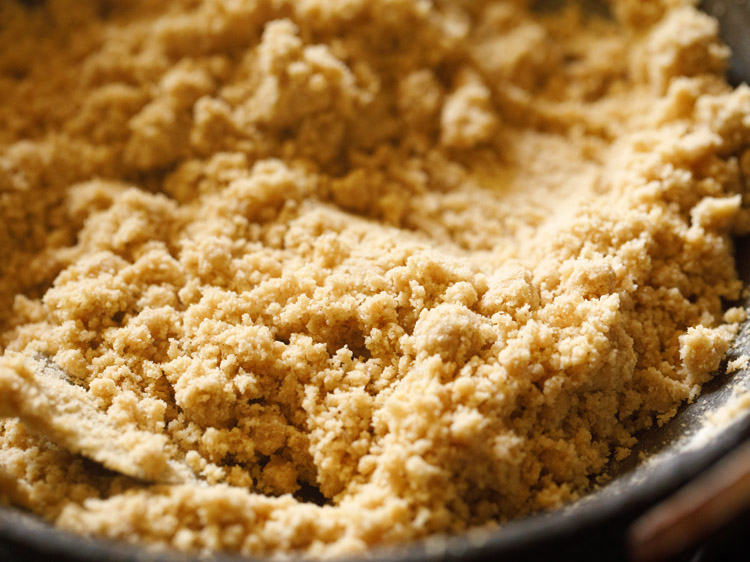
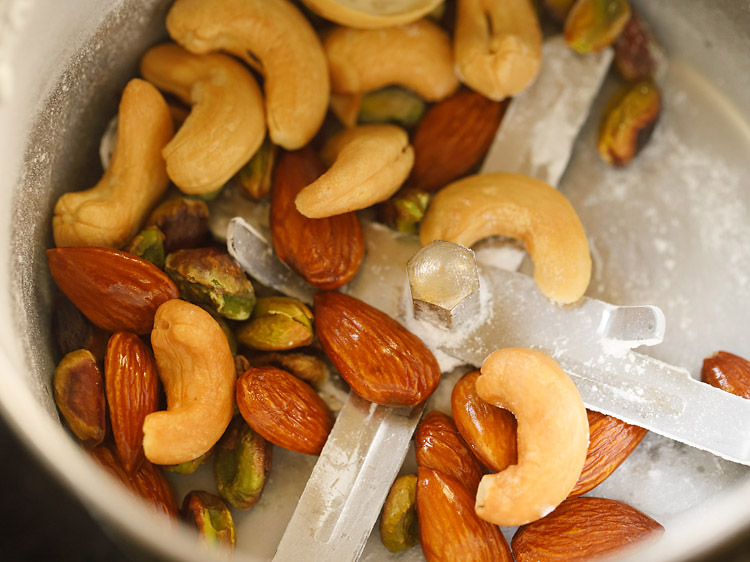
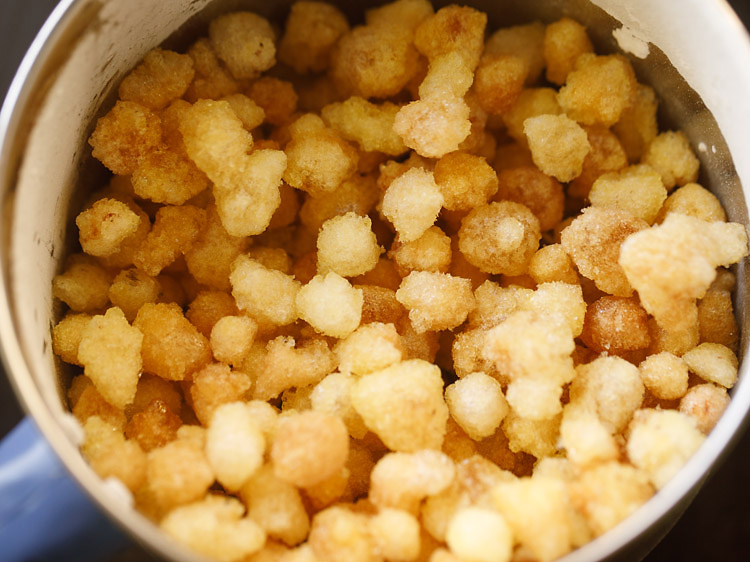
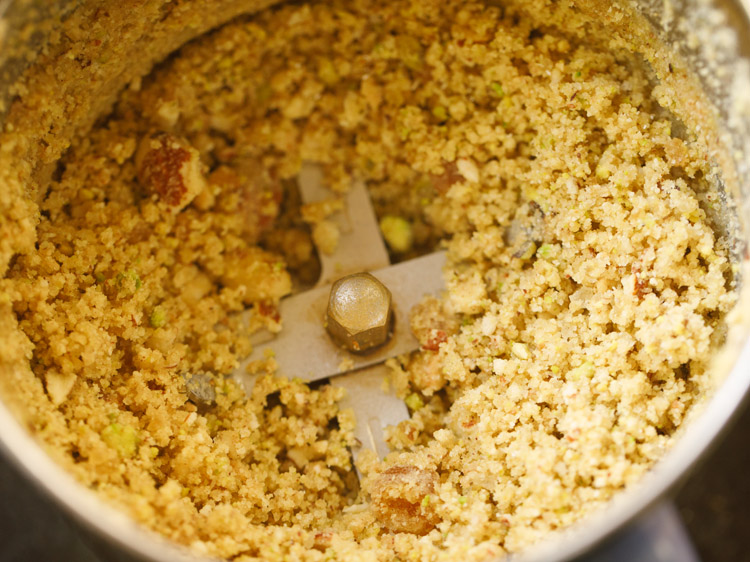
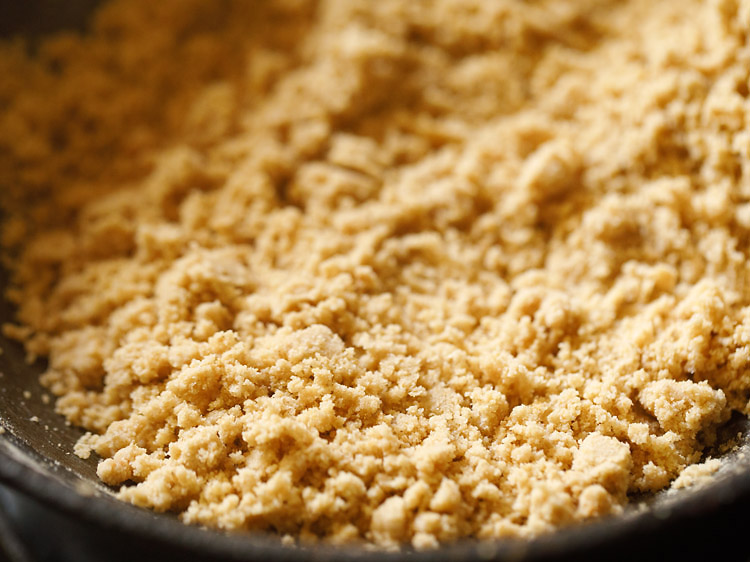
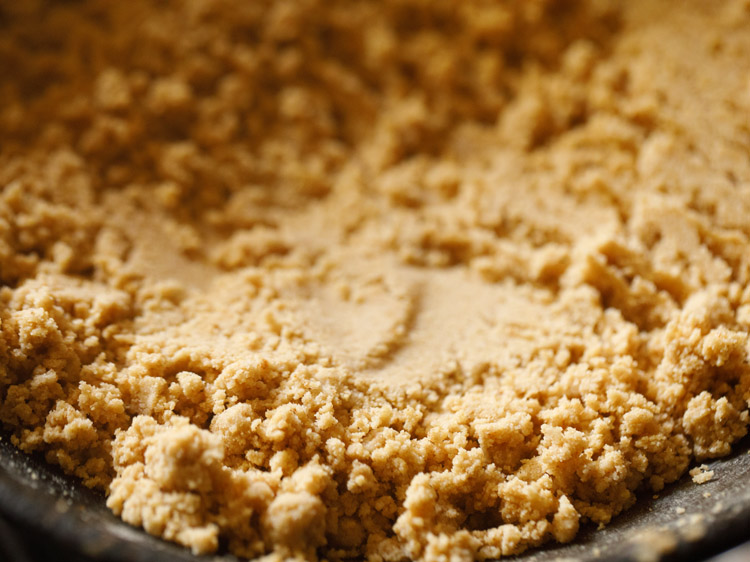
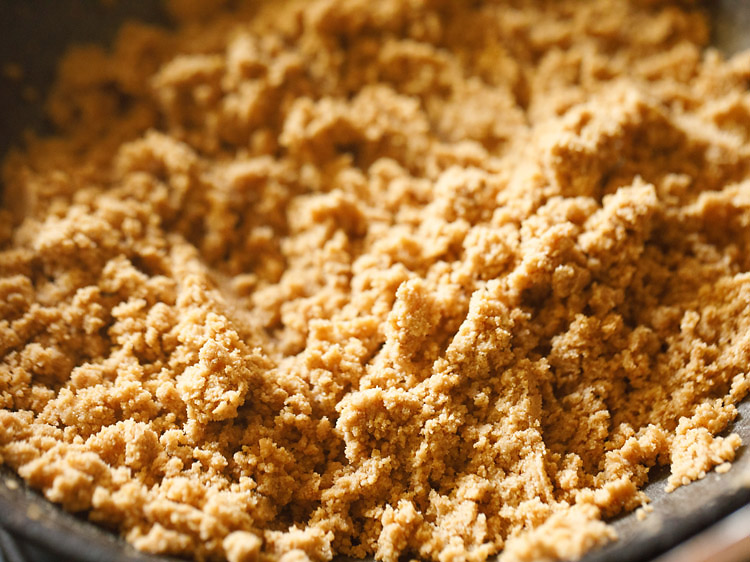
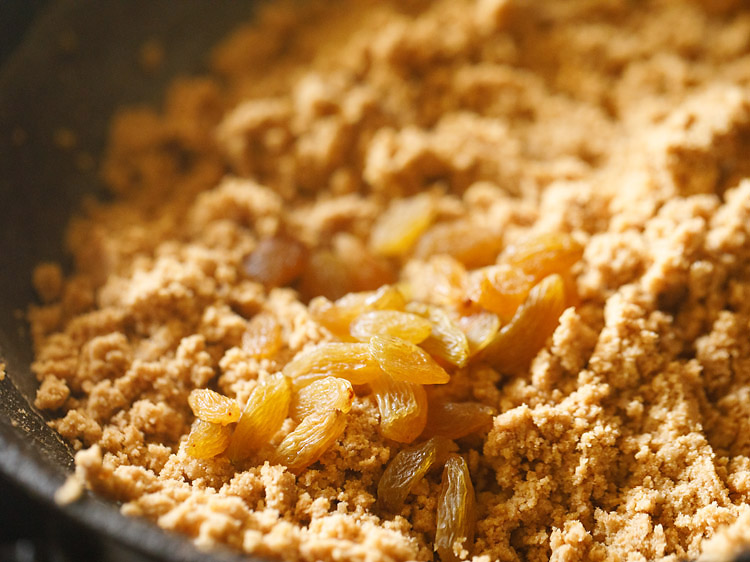
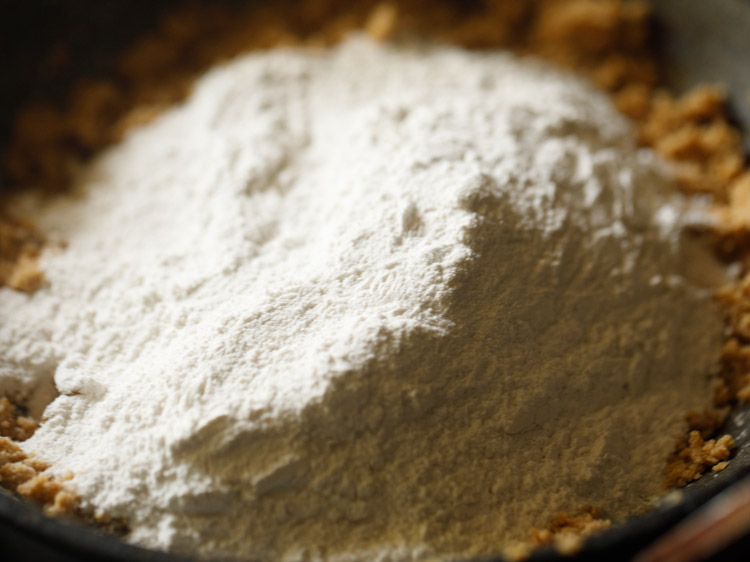
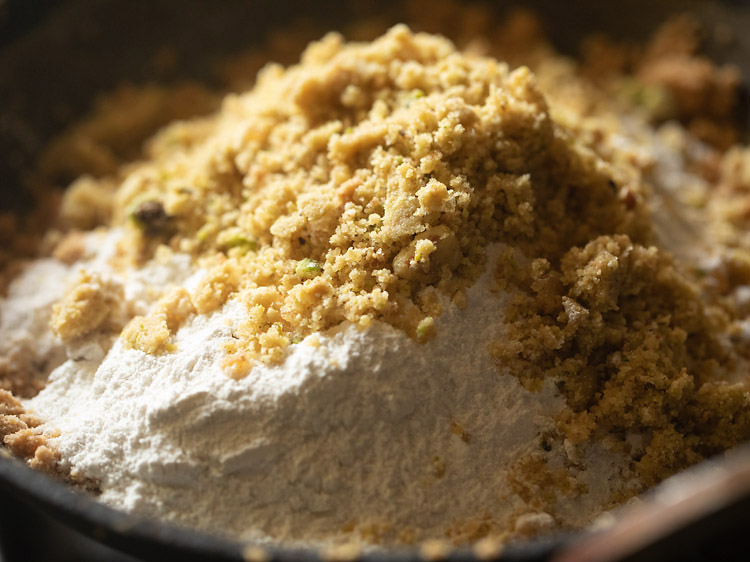
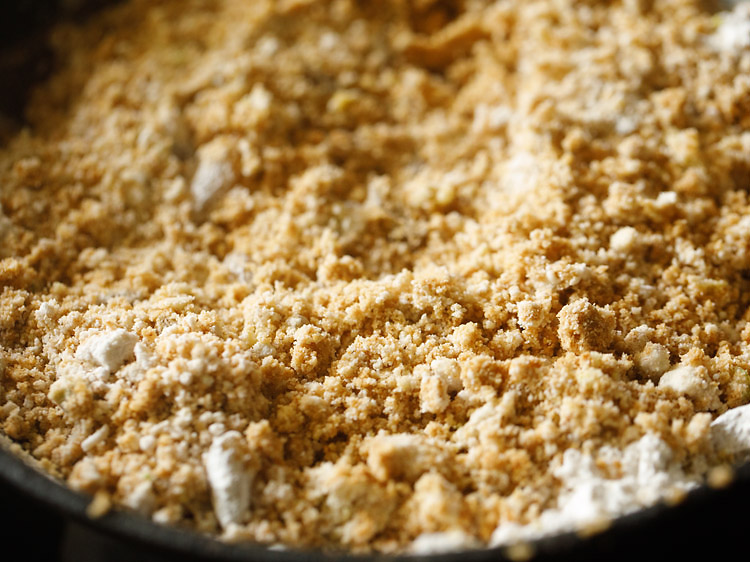
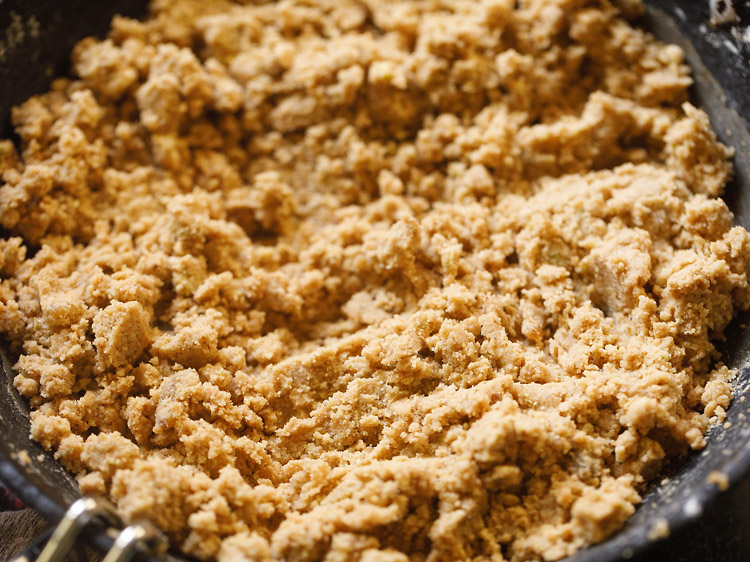
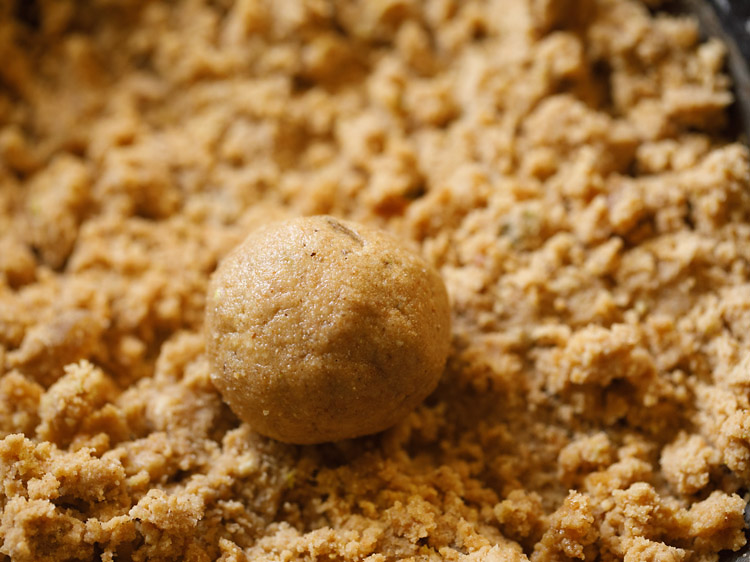
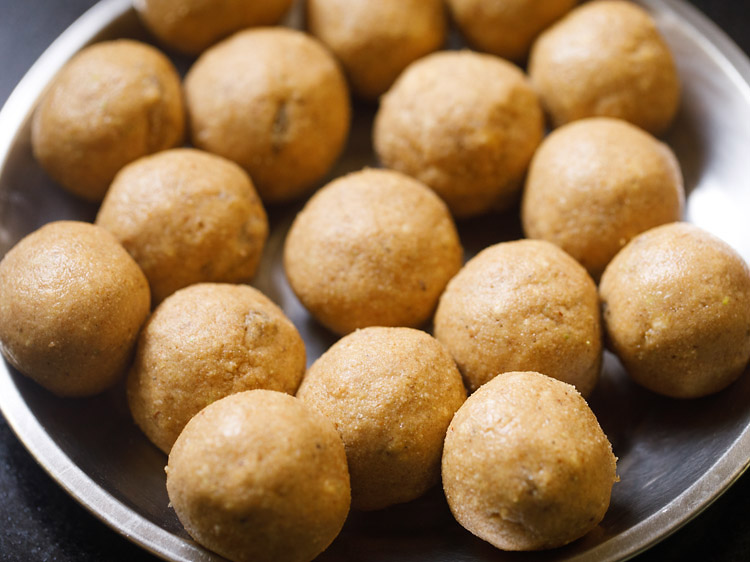

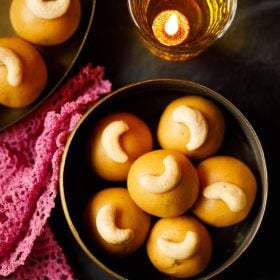
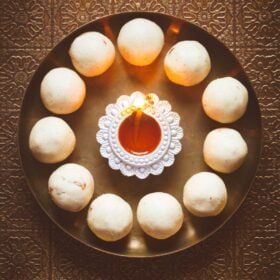
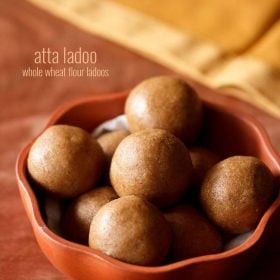
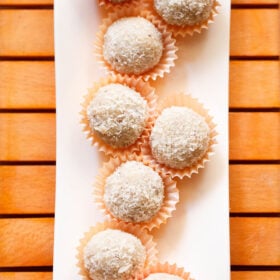
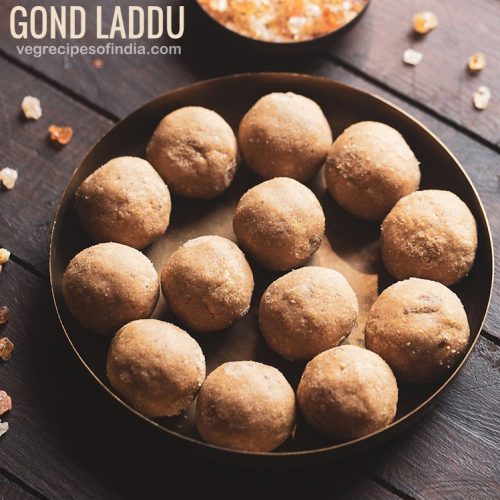
title: “Gond Ke Laddu Nutritious Gond Laddu " ShowToc: true date: “2024-09-11” author: “Sam Harris”
What is Gond
Like I mentioned in the beginning, ‘gond’ is the Hindi word for ‘gum.’ These are natural gums derived from the sap of trees, some of which are edible and some not. Indian cuisine traditionally uses some of these edible gums in making the Gond Ke Laddu, a common sweet snack. In addition to this Gond Ke Laddu recipe, there are various other dishes that include gond as an important ingredient. But before I mention about those, here is a bit more on the 2 most used types of edible gums in Indian cuisine (particularly in North India):
- Tragacanth gum: This one (photo below) is also called as ‘katira gond’ in Hindi language and ‘badam pisin’ in Tamil language. It has cooling properties and thus, is used as a cooling ingredient in summers. Thus also added to typical refreshing summer beverages like gond sharbat, Jigarthanda, Falooda, etc. It swells and becomes jelly like when soaked in water. Due to this property, it is used as a thickener in many food items.
- Acacia gum or gum Arabic: This is the dried sap of the acacia tree, also referred to as the babul tree (kikar) in Hindi. It is known as ‘Dink’ in Marathi or ‘Gond’ in Hindi. To make Gond Ke Laddu, acacia gum is used. Acacia gum is heaty and thus, consumed during winters as it helps to keep the body warm. Gond Ke Laddu and Gond Panjiri are quintessential winter sweets in many parts of North India. Gond ladoo is also great for nursing mothers.
About Gond Ke Laddu
Making Gond Ke Laddu is a winter ritual in my home, every year. We usually make 1 to 2 kilograms of these ladoos during winters. I have been preparing these laddus since long now. Hence, it was only right to share this recipe with you all here. Also, because it is one of the classic Indian recipes, which is also beneficial for the health. Gond Ke Laddu is also called as Dink Ladoo in Maharashtrian cuisine. However, this particular recipe is a Punjabi one that I originally learned from my mother-in-law. Since the time I learnt it from her, I have been making it at home. In this recipe, I have ground the unrefined sugar to get a fine powder. You can even use store-bought powdered sugar while making Gond Ke Laddu. These laddus are nutrient-dense, heavy and filling, as apart from gond, whole wheat flour, ghee and nuts are also added in the recipe.
How to make Gond Ke Laddu
Make Powdered Sugar
- Take 1 heaped cup raw sugar (200 grams) in a grinder jar.
- Grind to a fine powder. Remove on a plate and set aside.
Fry Nuts
- Heat ½ cup + 4 tablespoons desi ghee in a heavy kadai. Do not use a non-stick kadai. A heavy iron or aluminum kadai works best for frying gond.
- Let the ghee melt. Keep heat to medium-low.
- Add 2 tablespoons almonds.
- Stirring often, fry almonds.
- Fry almonds till they change color. Remove with a slotted spoon and keep aside.
- Now, add 2 tablespoons cashews.
- Stirring often, fry cashews.
- Fry cashews till they become light golden or golden. Remove with a slotted spoon and keep aside.
- Add 2 tablespoons pistachios. Fry for some seconds till they change color.
- Remove and keep aside.
Fry Gond
- Now in the same ghee, add one piece of gond. If the gond comes up gradually and puffs up, the oil is ready to fry the gond. If the gond settles down in the oil, then increase the heat and let oil become hot. In case the gond comes up quickly, then oil is very hot. Reduce the heat so that the oil temperature reduces a bit.
- Add gond in 2 batches. If you are experienced, then add gond in a single batch. I added all the gond at once and fried them.
- Stir continuously and fry gond till all of it puffs up.
- The gond pieces have to be fried evenly. 17. Stir continuously.
- Fry well in ghee and do not burn the pieces. They will turn heavy and puff up while frying.
- Remove the puffed up gond with a slotted spoon.
- Keep aside in a bowl or plate.
Roast Whole Wheat Flour
- Reduce the heat to low and add 2 cups whole wheat flour (atta) in the same ghee.
- Mix flour very well with ghee.
- Begin to roast flour with the ghee on medium-low to medium heat.
- While the atta is getting roasted, add fried nuts in a grinder jar.
- Also add the fried gond in the grinder jar or spice-grinder.
- Pulse and grind to a semi-fine or coarse powder. You can keep the nuts whole, if you want. You can also use a rolling pin and crush gond. Keep the powdered gond-nuts mixture aside. Note that the atta is getting roasted, while you grind the nuts and gond. If you are not able to multitask, then switch off the heat after frying gond. Crush nuts and gond in the grinder. Then, switch on the heat again and let ghee become slightly hot. Add atta and roast.
- Continue to stir and roast the atta.
- Roast atta till the color changes and you get a nutty aroma. Stir continuously, when you see the atta changing its color. 29. Stir and roast till the atta becomes golden or brown. Overall it took me a total of 17 minutes for the atta to get roasted to perfection (I had used a heavy iron kadai). Note that the timing will vary with the material, size and thickness of the kadai or pan. If you use steel kadai, then it will take less time. Also, check the taste of the roasted whole wheat flour and it should feel cooked. You should not feel any rawness in the taste.
Make Gond Ke Laddu
- Switch off the heat. Remove the kadai from the stovetop, add 2 tablespoons raisins and 1 teaspoon cardamom powder. You can even skip cardamom powder.
- Next, add the powdered sugar.
- Add the prepared gond-nut mixture.
- Begin to mix with a spoon. While mixing, break the sugar lumps with a spatula or spoon, if any, in the mixture.
- Mix very well.
- When the ladoo mixture is still hot and the heat is tolerable to you, take a heaped size portion of it in a spoon or in your palms. Shape in a round ladoo. In case the heat is not tolerable, then wait for some minutes. Avoid burning your hands. If the mixture does not hold shape, then add 1 to 2 tablespoons ghee. Note that the ghee should be in a semi-solid state at room temperature.
- Make medium-sized Gond Ke Laddu from the prepared mixture.
- Serve Gond Ke Laddu as a winter sweet snack plain or with some hot milk. When cooled to room temperature, store in an air-tight steel container at room temperature for a couple of months. The recipe yields 17 to 18 laddus and can be easily doubled or tripled. You can even half the recipe.
Benefits of Gond
Here are some of the reasons why you must consider trying this recipe of Gond Ke Laddu all the more:
Gond is a good source of calcium; thus, helps in keeping the bones and teeth strongBeing heaty, it helps to keep the body warm during cold wintersIt is also an excellent source of energy; thus, is apt for winter consumption and good for kids tooGond is given to nursing mothers as it helps in strengthening the backbone and aids in milk production. It also helps in giving energy and strength to mothers after pregnancyIt also helps the uterus to get back to its size, post child birth.
While the above is why should absolutely consider including the acacia gum in your diet, one important thing to remember is that you should avoid consuming it during pregnancy, as it is heaty in nature.
Expert Tips
Please be sure to rate the recipe in the recipe card or leave a comment below if you have made it. For more vegetarian inspirations, Sign Up for my emails or follow me on Instagram, Youtube, Facebook, Pinterest or Twitter. Besan ke Laddu Recipe (Easy Diwali Sweet) Rava Laddu Recipe | Suji Ke Laddu Atta Laddu | Wheat Ladoo Coconut Ladoo Recipe | Nariyal ke Laddu Made In 3 Unique Ways This Gond ke Laddu recipe from the blog archives, first published in January 2019 has been republished and updated on December 2022.













































